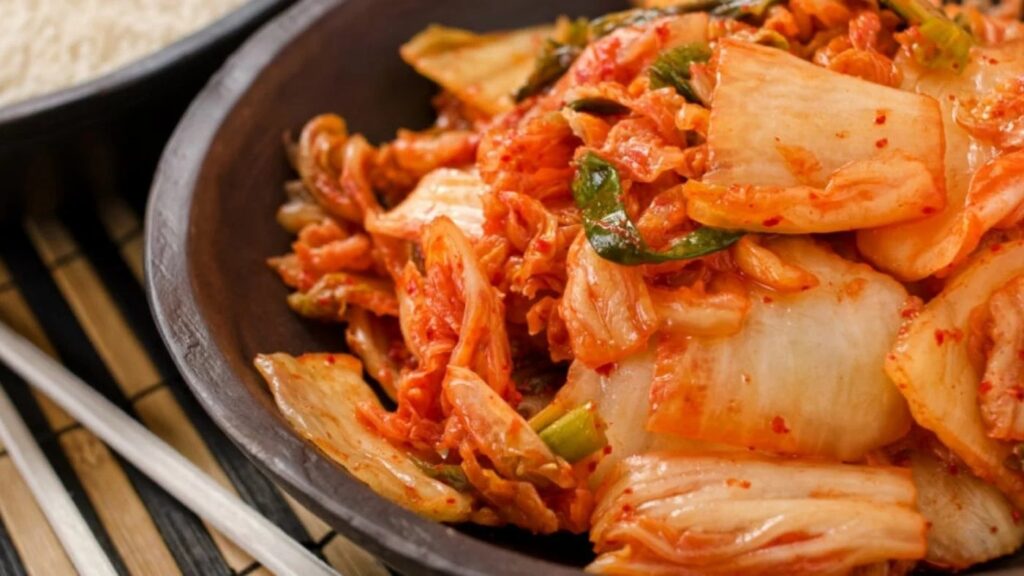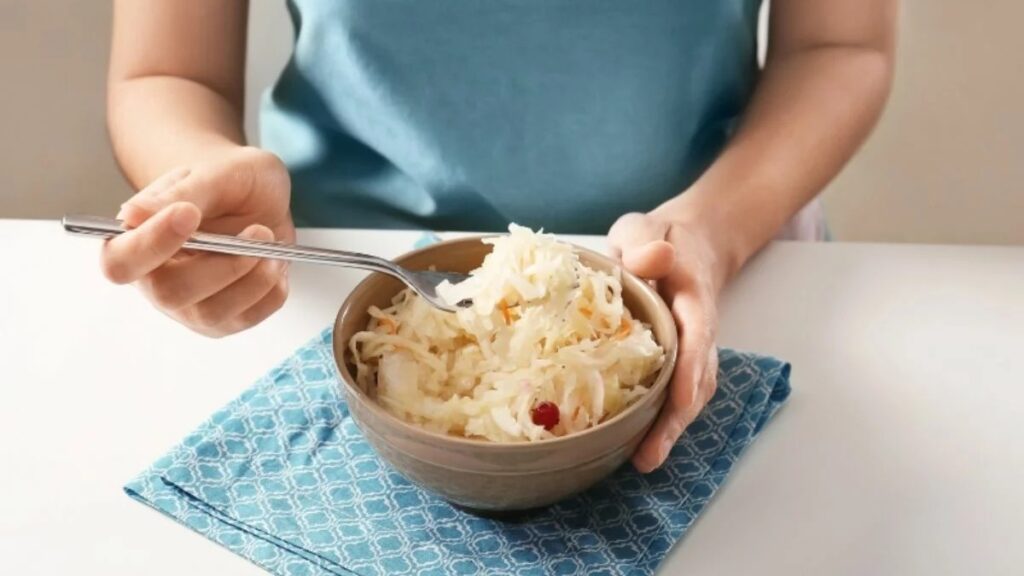Have the pieces of garlic in your fermentations turned blue or green? Worried that everything may be lost?
Don’t panic, this is normal and totally edible! This colour change is due to a chemical reaction between the garlic and the lactic acid in the fermentation.
Find out more about lactic acid fermentation in our Guide to Lacto-Fermentation.
Why Does Garlic Turn Blue?
Garlic is originally a creamy white colour, but it can turn blue or green in the prolonged presence of any acidic ingredient, such as lemon juice, vinegar, or the contents of a lacto-fermentation.
Acidity causes a chemical reaction with certain sulfur compounds present in garlic cloves, forming polypyrroles, the molecules that give garlic its green colour.
This reaction is not always instantaneous. Small pieces of garlic are more likely to turn blue, but whole cloves can also turn blue.
Why Does Garlic Turn Blue During Fermentation?
Even if your recipe doesn’t contain any acidic ingredients, your garlic cloves will likely turn blue or green over time.
During lacto-fermentation, bacteria produce lactic acid, which creates the perfect conditions for garlic to turn blue.
Don’t be surprised if your kimchi is dotted with little slivers of greenish garlic! Far from being a sign of mould or failure, it’s proof that your fermentation has been properly acidified.
Blueing doesn’t always happen. In any case, whether your garlic remains white or turns blue, it’s perfectly normal!
Is It Unsafe to Eat Blue or Green Garlic?
No, eating blue or green garlic is not dangerous. This colour change is the result of a natural chemical reaction and does not mean that the garlic is spoiled or toxic. Although the colour may be surprising, it does not affect the safety or nutritional quality of garlic.
This transformation is often seen in traditional recipes around the world. In China, the blueing of garlic is sought after for certain traditional dishes, such as làbā suàn, a green garlic vinegar condiment. These jade-coloured garlic cloves are eaten at Chinese New Year.
Does Blue or Green Garlic Taste Different From White Garlic?
The change of colour of garlic to blue or green during fermentation does not radically alter its flavour. Fermentation can make garlic milder and less spicy, but this is not directly related to colour. However, the visual perception of coloured garlic could subtly influence our taste impression, even if the difference in taste is minimal.
How Can I Prevent My Garlic From Turning Blue During Fermentation?
To prevent garlic from turning blue during fermentation, you can blanch the garlic cloves briefly before fermenting them. This can help reduce the chemical reaction that causes the colour change. However, be aware that blanching can slightly alter the flavour and texture of the garlic. Therefore, it’s important to find a balance between preserving garlic’s natural colour and maintaining its authentic flavour.
Are There Other Foods That Can Change Colour During Fermentation?
Other foods, such as red cabbage, carrots, radishes, red onions, cucumbers, and spinach, can also change colour during fermentation. However, these changes are often less surprising and spectacular than the transformation of garlic into blue or green shades.

